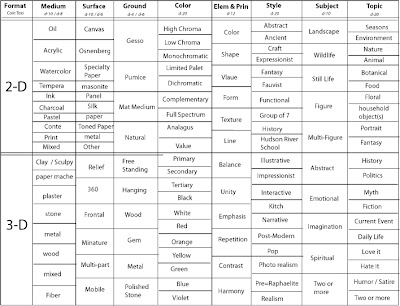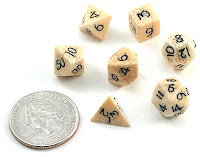
This was an exciting project (well, exciting to me) and I really enjoyed working on it. It was supposed to be simple, yet these things never work out as planned.
An Artistic Dress can be just about anything, but they were inspired by the Pre-Raphaelites, and the idea was to do away with the heavy corsets and body shaping that was so common for several hundred years. Artistic Dresses can be very simple or incredibly complex. My prices
start at $100 because the simplest types of artistic dresses are very much like the chemise dresses of the late 1700's, which are super-easy to make... and very beautiful.
Last year I made an outfit for an English Country Dancer (early 1800's) and he was very happy with it. His wife, L., ordered this dress about 2 months ago. I've had a huge backlog, so it took me a while to get to it. Her event is Saturday. Talk about the skin of my teeth.
We looked at all different artistic dresses, and pricing it out we came up with this one. It's Countess Brownlow, painted by her husband, Leighton Brownlow in 1879. Isn't that gown fabulous?
It's essentially a chemise dress with a fixed yoke, fitted undersleeves, poofy drawstring oversleeves and a self-fabric belt (sash, whatever). As far as I can tell it would close in the front with the belt fastening in back. The petticoat is satin, and most likely a gored skirt without a bustle. She is probably wearing a chemise under everything, and at this point drawers...
though I'm not sure about lady's underwear in the Artistic movement, I've never come across that information.
L. wanted the dress in blue cotton from the beginning, and we decided to go with the satin petticoat as well. Unfortunately genuine (ie, not poly) satin is quite expensive, so we (I) settled for a cotton/poly blend, which is quite pretty and fairly durable, and OK for what she wants it for. I used silk to trim the yoke, and standard cheep nylon/poly ribbons for sleeves & drawstrings. The thing has a million snaps.
 Construction:
Construction:
BODY: I started out with the chemise dress pattern (Cut of Women's Clothes) and modified it from there. First I raised the neckline, both front and back, then got rid of the train and scoop neck (to create a more square neckline). This naturally increased the size of the armholes, which is good as she has to have full arm movement.
I got rid of the drawstring under the bust, but kept the one at the waist.
Increased the size of the shoulder straps and reduced the amount of fabric due to the thickness... it's a thin cotton, but for chemise dresses you need something you could watch t-v through, and she's a small woman.
SLEEVES: I increased the size by a lot. Added 6 drawstrings instead of the original 2. This is designed as a 1/2 sleeve, which will end just above or below the elbow. It was 32" long.
The next thing was to mount it on a long undersleeve to give it structure and the lower sleeves that stick out. I used some Edwardian cut that I didn't take note of, other than it was the shape I wanted. It's really quite comfortable.

PETTICOAT: I used an original magazine pattern (1886 from Goodeys, I think) for an All Round Skirt, that is super-pretty and works well for a variety of styles. The butt is pleated and can fit over a small bustle, or train on the ground. I left this one short so she could dance without tripping over it... hopefully. It has a fitted waistband and closes with hook & eyes and one lonely snap.
My dress dummy always makes things look stubby; it needs a new stand.
Sewing:
1. I fit the top together like a chemise dress (
real helpful, I know) then sewed the sleeves and set them.
2. I sewed the front together leaving 4" open below the waist so she could get it over her head.
3. Then I draped it over the dress dummy (too big for my customer) and arranged the folds to look nice. That took some time.

4. It took a while to figure out what trim we liked, I did a lot of pinning and picture taking. She settled on the bi-colored silk, which I loved too. I also really liked the white lace (at left), though that made it much more Edwardian than Artistic.
5. I hand stitched the silk onto the dress, creating the fixed yoke. I didn't sew through all the layers, this gives it more dimension and better shape.
6. It took even more time to figure out how I was going to close the front. I finally settled on snaps and discovered that I HATE sewing the bloody things on. A button takes 30 seconds. A snap takes 10 minutes. No joke. Figure that in for your time if you ever decide to use snaps. I used 20 of the little buggers. Get thin needles.
Snaps were common in Edwardian garments, I'm not sure about the historic accuracy for the 1870's.
7. Sewed the satin hem on, and finished off the sleeves with a narrow satin bias tape.
Note: I always cut my own bias tape from the same fabric. It looks better and wears better.
8. The hem is hand-stitched. Watched Pirates of the Caribean while doing that. "Cuffs" are hand-stitched too.
There was a lot of hand-stitching.
9. Cut & sewed the petticoat. I used French seams and did a machine hem due to time constraints. It looks OK. Because it's a gored skirt the hem is a little crinkled on the inside, but looks great on the outside.
10. Attached the waistband and then sewed on the hooks & eyes and the last, lone snap.
11. Pressed the heck out of everything then boxed it up to get wrinkled and carted 1/2 way across the state in a Fed-Ex truck.
The dress and petticoat came to $175 before tax and shipping.
I took pictures, but in my typical fashion, not the ones I should have.
Here are some more Artistic Dresses for your viewing pleasure.

Symphony in White
Whistler
1862
(This is the one she wanted to begin with, but it prices out at around $250)... not including the polar bear rug.
This is a very fitted dress, it's got a pleated bodice that probably goes over a cut base (that's how I'd do it), long undersleeves with poofy oversleeves and cuffs. A gored, trained skirt (attached), belt and tons of buttons. Lace at the collar. The most complex thing about this dress is the bodice. It probably has a hidden button placket down the front to get in and out of it.

Jane Morris in a blue silk dress
Not sure if this is the title... probably not.
Rosetti
1868
You can see how this one is a little more fitted than the Brownlow dress. It's got a top very similar to contemporary garments, without the bones. It may be a sack-type dress with a separate belt, or the belt may be part of it... could go either way.
If I were making this I would want to use silk, but just to sew it would probably be around between $150 and $200. The belt with silk flowers would add to that.

Portrait of Francis Leyland
Whistler
1872-73
Dear God I love this dress! Someone please order it so I've got an excuse to make it.
This is a super-complex garment, yet the simple elegance makes it one of the most beautiful dresses I've ever seen. I LOVE this dress.
It's a princess cut base ($250), with a separate yoke gathered at the shoulders in elegant little lines. I love the trim that connects the yoke with the body in back.
The sheer overlay is a sack-back tea gown ($200) with embroidered blossoms. Another overlay in blue makes up the sleeves and part of the yoke.
Then that fabulous collar! Heavy metallic trim with lace framing the neck.
And the cording that wraps her arms!
To make it would be somewhere between $500 and $1,000 depending on the fabrics. With hand embroidery or appliqued silk flowers it would be quite a bit more... but worth every penny.
Have I mentioned that I love this dress???
 This was a not-so-interesting project that turned out very nicely.
This was a not-so-interesting project that turned out very nicely.
 The only parts that are lined are the body and sleeves. The fabric was so thick that it became too stiff to work with as it was layered. I did a lot of clipping seams to get things to lay flat, especially in areas where there is pleating (cuffs, sleeves & neckline). After clipping, I overlocked those edges to make the garment more stable. This helped flatten the seams, but it made them stiffer. Then I cut them to 1/4" to reduce the bulk even more. I made a diagram... click on it for a full sized image.
The only parts that are lined are the body and sleeves. The fabric was so thick that it became too stiff to work with as it was layered. I did a lot of clipping seams to get things to lay flat, especially in areas where there is pleating (cuffs, sleeves & neckline). After clipping, I overlocked those edges to make the garment more stable. This helped flatten the seams, but it made them stiffer. Then I cut them to 1/4" to reduce the bulk even more. I made a diagram... click on it for a full sized image.
 The best part of this hunting shirt is that it's hand finished. This means all seams that show (except the sleeve gusset) are hand stitched. The collar & cuffs are finished by hand, so is the neck gusset. The lining is hand stitched to the sleeves on the inside, and hand stitched to the body along the opening & hem. It's set back a little so it doesn't show from the top side. I used a combination of overcast & back stitch for this. Both work well. I could have used a running stitch if I knew the shirt wouldn't get thrown in the washing machine... but I'd rather be safe than fix it later.
The best part of this hunting shirt is that it's hand finished. This means all seams that show (except the sleeve gusset) are hand stitched. The collar & cuffs are finished by hand, so is the neck gusset. The lining is hand stitched to the sleeves on the inside, and hand stitched to the body along the opening & hem. It's set back a little so it doesn't show from the top side. I used a combination of overcast & back stitch for this. Both work well. I could have used a running stitch if I knew the shirt wouldn't get thrown in the washing machine... but I'd rather be safe than fix it later.





























